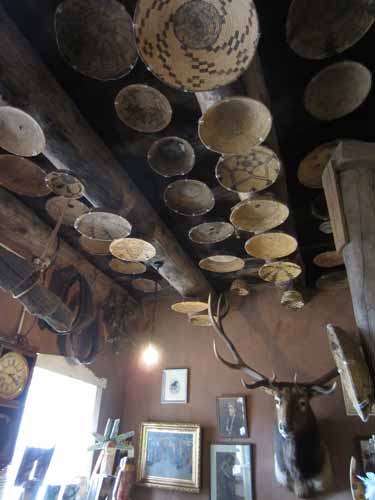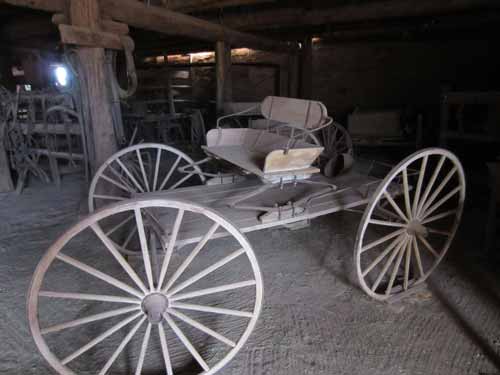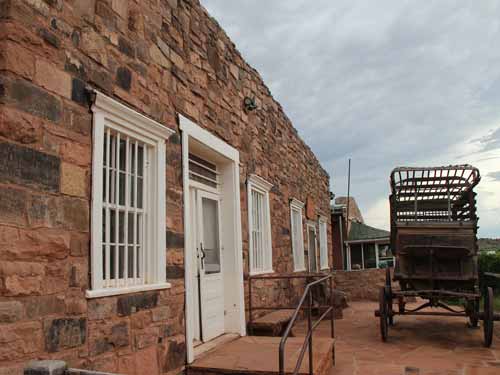In 1864, the local Navajo (Dine'é - The People) were forced at gunpoint to walk from their homelands to Fort Sumner in eastern New Mexico. Known as the Long Walk (Hwéeldi), some 53 different forced marches occurred over a 2-year period. At least 200 died during the over 300 mile trek. Over 9,000 people (including mixing enemy tribes) were settled in an internment camp with an area of only 40 square miles. The result was a disaster. In 1868 the reservation "experiment" was abandoned. In 1868, the Navajos were granted 3.5 million acres of land inside their four sacred mountains and they began their long walk home. When they returned, they found their herds decimated and their fields destroyed. Their old way of life was gone. Thus, trade became important.

In 1878, John Lorenzo Hubbell bought a set of small buildings from a trader named William Leonard. The large barn was begun in 1897 and the building itself in 1883. This trading post became a lifeline of supplies for Navajos looking to re-establish themselves. They swapped wool, sheep, rugs, jewelry, baskets and pottery for flour, sugar, coffee, baking powder, canned goods, tobacco, tools, cloth, etc. It was also a place for them to meet and socialize.



The main store

There were also several smaller back rooms, which used to be the family residence until 1967.

Today they are filled with artifacts and old trade items.


Long guns played a major role in early American history... for settlers, soldiers and Native Americans. John Hubbell was also a gun collector, admiring them for their historic importance and fine craftsmanship.

Until the 1860's, most long guns were muzzle-loaders (meaning they were loaded from the front with black powder and a lead projectile). Smoothbore muzzle-loaders were not known for their accuracy. This improved when gun makers began putting grooves in the barrel (known as rifling) to enable tighter fitting bullets.

The barn and corrals


In spite of numerous threats, the storm kept to itself.



A vocal resident of the large chicken coop

A prisoner transportation coach


Wow, from 1933!
We then drove up to Canyon de Chelly (pronounced de shay). Cottonwood Campground (near Chinle, Arizona) was located on Navajo land. We were given a list of rules (such as alcoholic beverages are illegal on the reservation... so is bringing your own livestock) and some information on the Navajo culture.
The Navajo is the largest of the Indian tribes in North America. The reservation covers 27,000 square miles, spanning across Utah, New Mexico and Arizona. It is surrounded by their four sacred mountains.
We set up our tent then went to the neighboring Thunderbird Cafeteria for some traditional fry bread and burgers.

